A living fence is a great alternative to regular fencing. It can bloom, attract wildlife and even change with the seasons.
Our editors and experts handpick every product we feature. We may earn a commission from your purchases.Learn more.
A living fence is a great alternative to regular fencing. It can bloom, attract wildlife and even change with the seasons.
Our editors and experts handpick every product we feature. We may earn a commission from your purchases.Learn more.
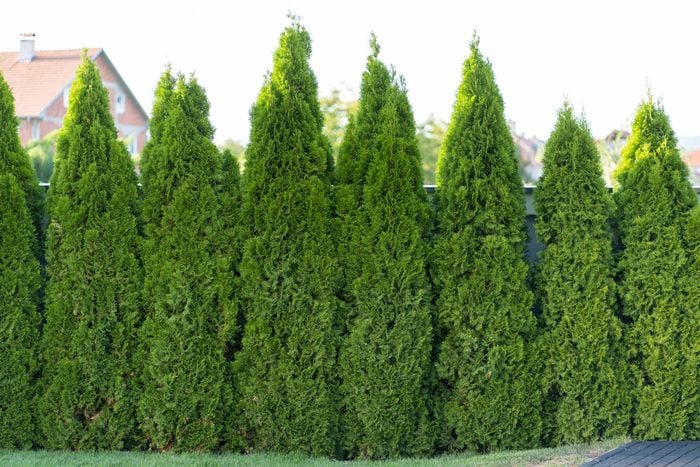
To screen your property without a wood or vinyl privacy fence, plant a row of arborvitae, Thuja occidentalis. These tall evergreen trees grow straight up and, when properly spaced, overlap to provide privacy.
Some varieties like North Pole don’t grow as wide as others, making them good choices for smaller gardens or yards. North Pole arborvitae is hardy in United States Department of Agriculture Plant Hardiness Zones 3 through 7. It grows 10 to 15 feet tall and four to five feet wide in full sun to part shade. One caution: Deer love it.
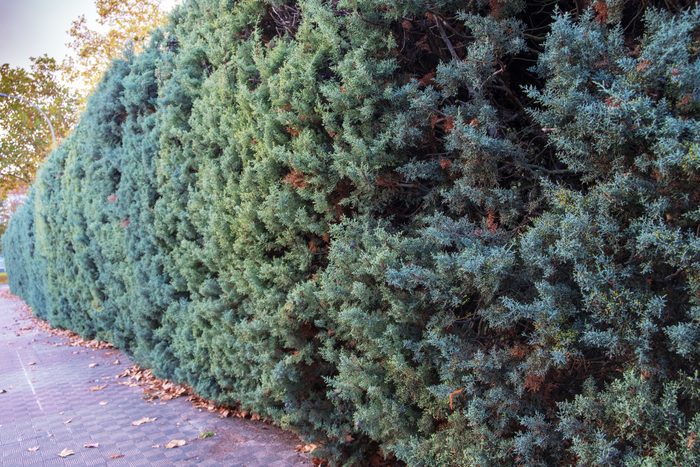
Many varieties of junipers, Juniperus sp., can be planted together to form a living fence. Some varieties like ‘Blue Arrow‘ can grow 16 to 20 feet tall but only two to four feet wide.
Hardy in USDA Zones 4 through 8, this juniper with bluish foliage grows best in full sun. Once established, it will handle some dryness. Birds enjoy its berries throughout the year. You can let this juniper grow naturally or give it a light trim in the spring for a more formal look.
When buying any juniper for a living fence, read the tag to ensure it will grow to the height you desire.
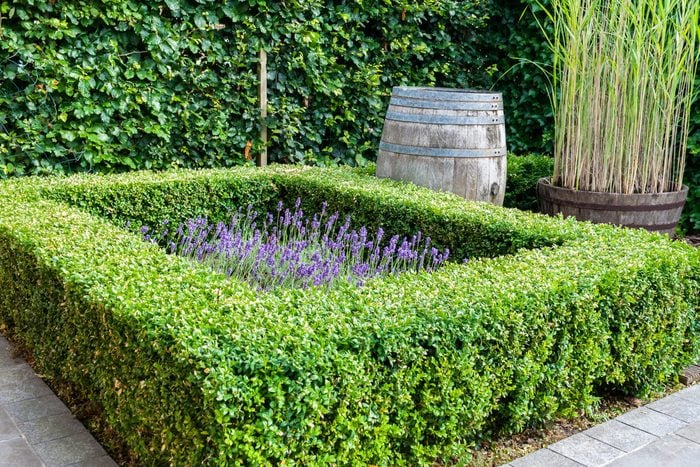
The shrub most often used as a border around formal gardens is a boxwood, Buxus sp. It’s a good choice for a shorter living flower bed fencing.
Varieties like ‘Wintergreen,‘ hardy in Zones 4 through 9, grow to about four feet tall and four feet wide. For a more formal look, you can shear back your boxwoods each spring. Some people don’t like the smell of these shrubs, but that’s what keeps deer from eating it.
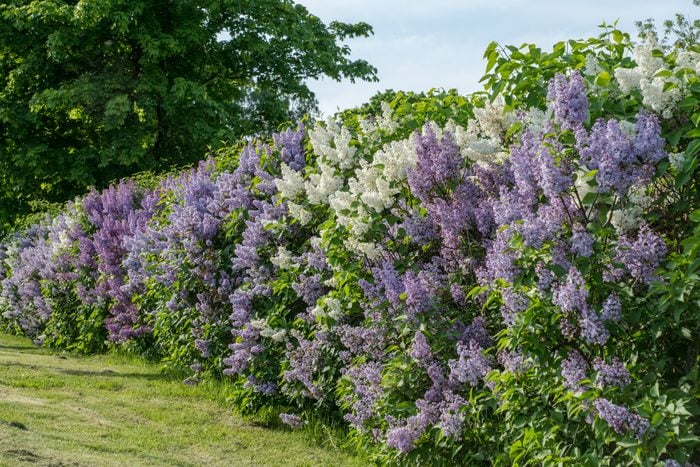
If you’d like a living fence with a burst of spring flowers, try a row of lilacs. Varieties like the Dwarf Korean Lilac, Syringa meyeri ‘Palibin,’ hardy in Zones 3 through 7, only grow up to five feet tall. With late spring pruning after they’ve flowered, you can maintain a narrower width or a shorter height.
For a taller lilac hedge, plant a ‘Miss Kim’ Lilac, Syringa pubescens subsp. patula ‘Miss Kim.’ Hardy in Zones 3 through 8, it will grow up to seven feet tall.
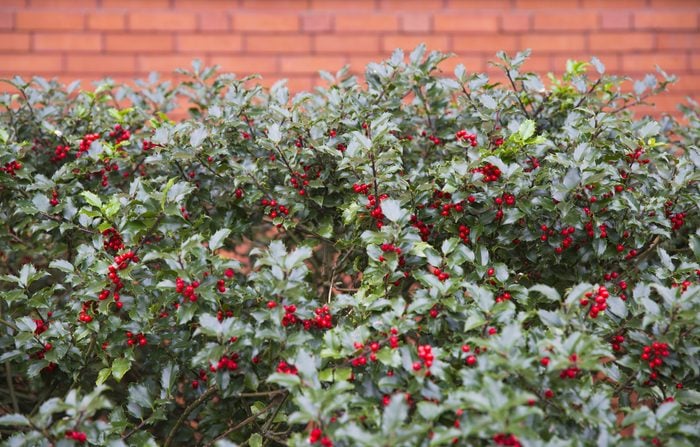
To create an almost impenetrable living fence, plant holly, like the hybrid Ilex x meserveae ‘Blue Princess.‘ This large shrub, hardy in Zones 5 through 9, can grow up to 12 feet tall and eight feet wide. Prune it in late spring to keep it smaller. It’s a broad leaf evergreen so you’ll enjoy privacy all year.
Because the male and female flowers are on separate plants, you’ll need to plant at least one male ‘Blue Prince‘ holly to be sure your living fence produces berries. A nearby ‘Blue Prince’ will pollinate up to five ‘Blue Princess’ hollies.
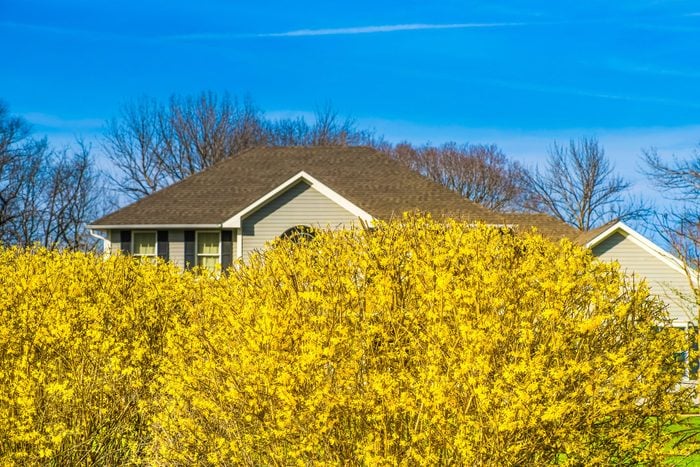
Here’s another shrub option with spring flowers. Varieties of forsythia grow to different heights, so check the plant tag to be sure you’re getting exactly what you want.
Varieties like ‘Show Off,‘ hardy in Zones 5 through 8, can grow up to six feet tall and wide. Many people prune their forsythia shrubs. If that’s you, trim it right after it blooms.
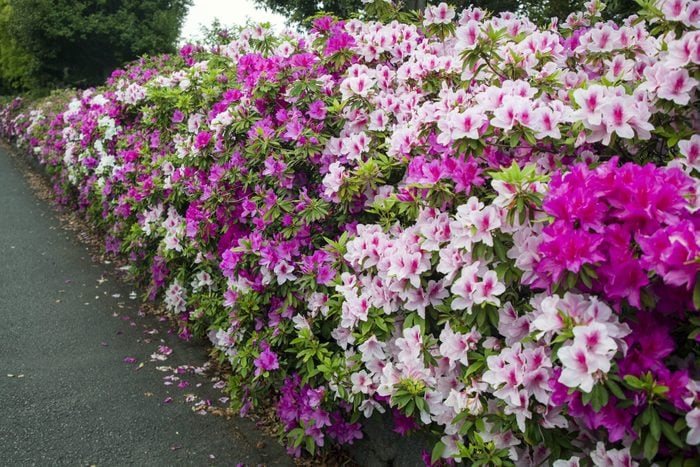
Many types of azaleas offer lots of spring color. Flowers range from white to pink, red, purple and all shades in between.
Most azaleas prefer partial shade, especially in the afternoon, and slightly acidic soil. Check the plant tags to make sure you’re buying varieties that will grow as tall or stay as short as you want. Buy several varieties in different colors to create an eye-popping spring display.
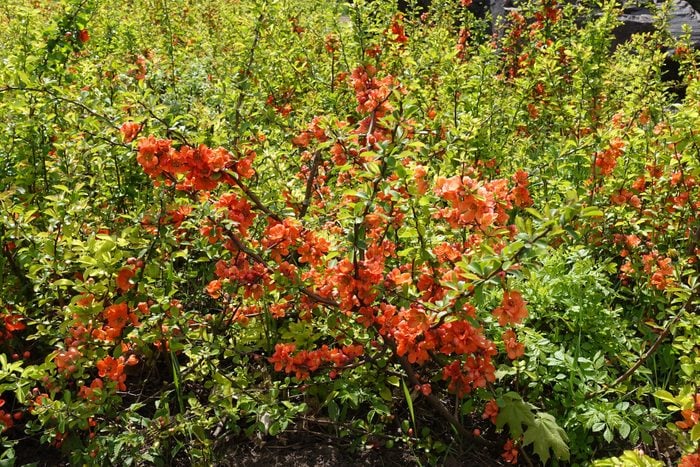
You don’t often see orange in the spring. But if that’s what you’re looking for, you’re in luck. You can get beautiful orange flowers on a flowering quince, Chaenomeles speciosa.
Proven Winners Color Choice ‘Double Take Orange‘ quince, hardy in Zones 5 through 8, will grow three to four feet tall and wide — good for a low fence. This particular variety lacks the thorns commonly found on other flowering quinces, so it’s more kid- and pet-friendly.
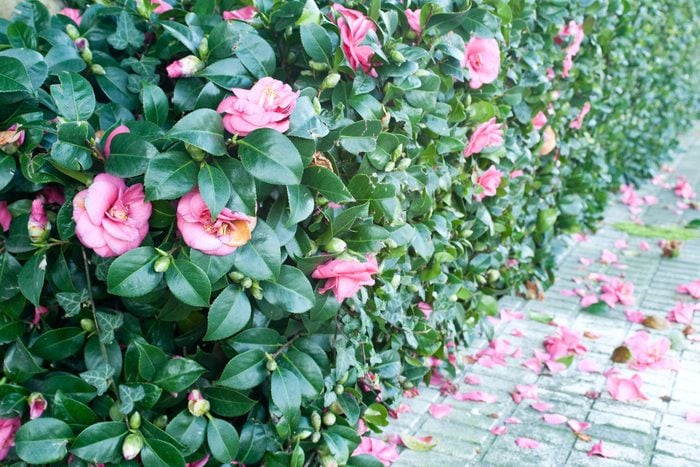
If you live in a warm climate, consider camellias. Generally hardy in Zones 7 through 10, camellias grow best in partial shade and well-drained soils. Left alone, they can grow six feet or taller and with flowers from fall to early spring, depending on the variety. Because they’re broadleaf evergreens, they’ll provide privacy all year round.
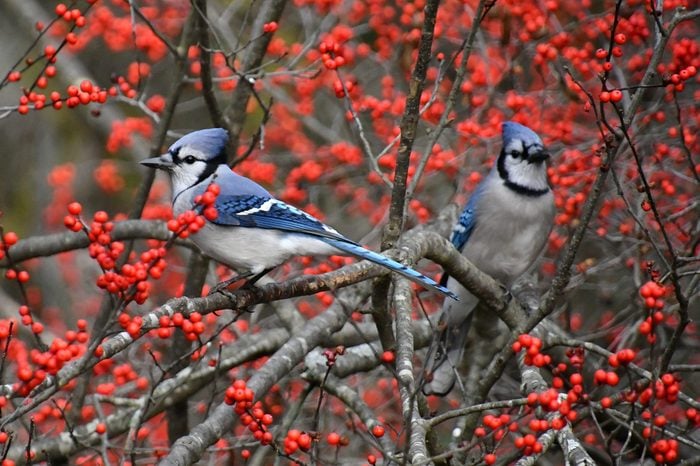
Native to the eastern U.S., winterberry offers a bright display of red berries on bare stems in the winter while the rest of your garden is brown and tan. Birds love those berries!
Winterberry, Ilex verticillata, hardy in Zones 3 through 9, can grow five to 10 feet tall and wide and tolerates wet soil. To keep it small, prune it after it flowers in the spring.